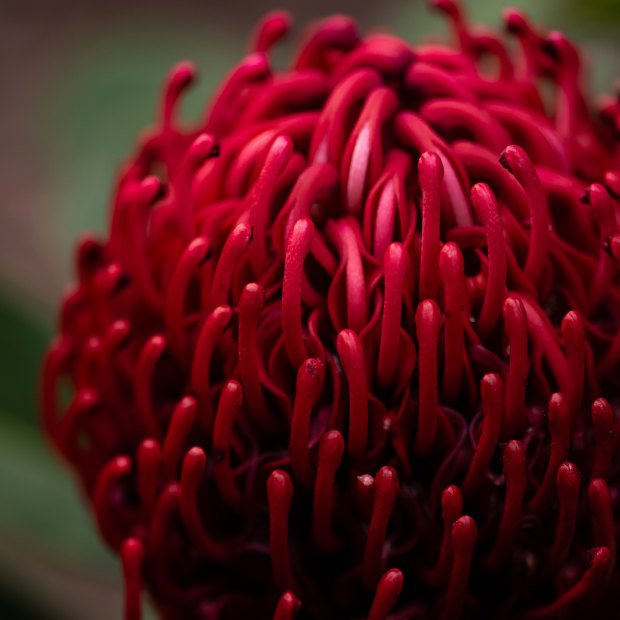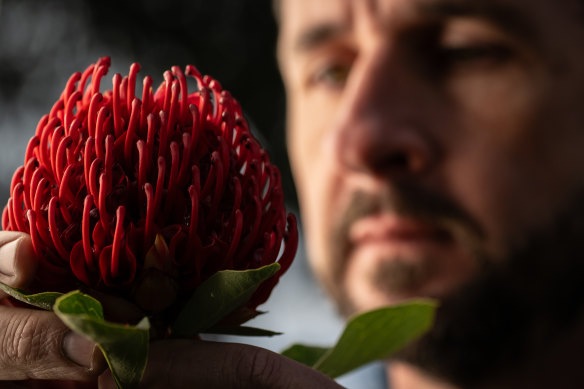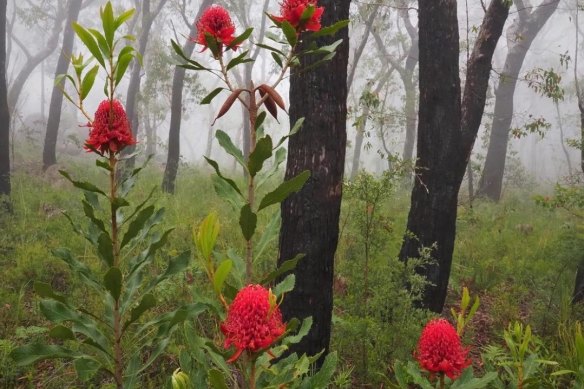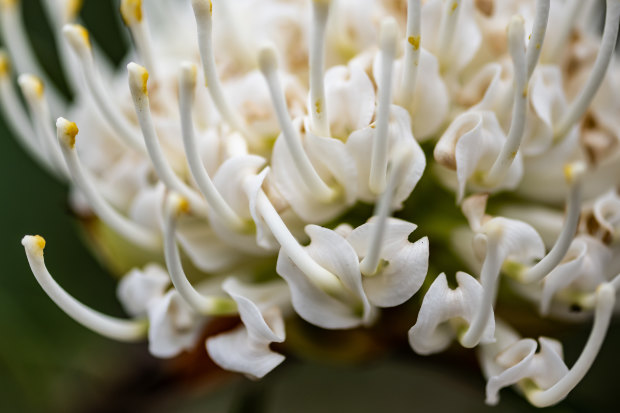Jacarandas v waratahs: Purple haze, pop stars and the campaign to save native flowers
By Julie Power

A waratah in bloom at the Australian Botanic Garden Mount Annan.Credit: Wolter Peeters
The highly Instagrammable lavender haze of the South American import jacaranda in Sydney’s streets can help raise awareness of the threat to native plants, including floral emblems the waratah and the wattle, environmentalists and botanists say.
The sharing of photos of jacarandas next month when they begin to bloom – or the cherry blossom in spring – and the popularity of music by artists such as Taylor Swift who sing about plants and animals could heighten public awareness of the worldwide threat to biodiversity.
Jacarandas and cherry blossoms may even be gateway plants to an appreciation of other species, and treatment for a phenomenon known as “plant blindness”, where members of the public don’t appreciate their importance to biodiversity and society. They may notice animals, but see plants as a “large green backdrop”.
The Gibraltar Range waratah, now in flower, was this month added to the federal government’s national list of threatened species. It is one of four NSW waratah species and a close relative of the state’s floral emblem, the waratah Telopea speciosissima.

Botanic Gardens of Sydney director of horticulture and living collections John Siemon with one of the many flowering waratahs. Credit: Wolter Peeters
More than 100 species of wattle are also listed. So far, the golden wattle Acacia pycnantha Benth, the nation’s floral emblem, is not listed.
The Biodiversity Council says since the arrival of Europeans in Australia at least 35 plant species have become extinct and 1437 more are recognised as at risk of extinction.
The council’s spokesperson, Jaana Dielenberg, said threatened native plant populations have lost 75 per cent of their numbers, illustrating the need to step up efforts to stop further extinctions.
Botanist Dr Chantelle Doyle, a research associate in the threatened Rare and Endemic Plant Research Group at the University of NSW, said Swift’s songs were used in an experiment that helped students overcome “plant blindness” among young people. The inability to see plants means if they don’t notice them, they can’t identify them, or notice if they are gone.
Swift was described in The New York Times as “singing us back to nature”. In songs on albums Evermore and Folklore, she includes references to willows, ivy, wisteria, golden leaves. The song All Too Well talks about autumn leaves falling down like pieces into place.

This month, the Gibraltar Range waratah, now in flower, was added to the federal government’s national list of threatened species.Credit: @katesadventureseas on Instagram
Environmentalist Jeff Opperman from the World Wildlife Fund wrote that Swift’s lyrics and album covers abound with references to nature. “Gold was the colour of the leaves when I showed you around Centennial Park.”
Doyle thinks crowds flocking to see mass displays of introduced species such as jacarandas or cherry blossoms was positive.
“Anything that encourages people to notice different species is great. I’d love it if they could notice natives, too,” she said.
“Mostly I think people aren’t just yet fully aware of the stunning array of native plants or how to find them. It takes time and practice to distinguish more than just ‘a green plant’ when walking in our landscape.
“Familiarity with our Australian plants takes time and an ‘eye’. Many are not big and showy, but they are stunning up close.”

One of the flowering waratahs at Australian Botanic Garden Mount Annan.Credit: Wolter Peeters
Botanic Gardens of Sydney director of horticulture and living collection John Siemon said Australia’s 24,000 native species were as spectacular and diverse as introduced plants. “Yet oddly, still, many people go to a non-native first, which is a strange selection choice.”
The exclusively native gardens at Mount Annan attracts huge crowds to its mass displays of native paper daisies, blooming next month.
“There is definitely an Instagram movement that people are obsessed with, getting these mass flower fields in the background.
“Our paper daisy display has been created, not just for Instagrammers, for that massed effect so you have that ‘wow’ moment that shows native plants are absolutely not boring.”
Australian Native Plants Society president John Aitken said it was unfortunate the Australian community did not seem as keen on native flora as they were for exotics such as the jacaranda.
“There could even be an element of cultural botanic cringe – if it’s from overseas, it’s better,” said the society’s secretary Rhonda Daniels, an expert on Australia’s 1000 species of wattles.
Now flowering in NSW’s botanic gardens at Mount Tomah, Mount Annan and in the city, the waratah narrowly missed becoming the floral emblem of Australia. About 93 per cent of Australia’s plants, or about 21,000 described so far, are unique to Australia.
Start the day with a summary of the day’s most important and interesting stories, analysis and insights. Sign up for our Morning Edition newsletter.